Do I recommend this course?
Heck yeah!
Enrolling in the SIGINT course is essential because it teaches you how to identify frequencies people or groups around you use. Then, students are guided through the F3EAD method to intercept, exploit, and act on what they learn by listening to frequencies around them.
Who is This Course For?
As someone who knew very little about radio/comms. I felt that the topics and exercises we completed in the RTO course were necessary to get the most value out of the SIGINT course.
For example, we sent digital data bursts throughout the SIGINT exercises. If you have not pre-loaded your tablet and spent the time practicing sending digital data bursts and troubleshooting in the RTO class, you may be lost when we do that in the SIGINT course.
Another example is all the omnidirectional jungle antennas we built in the RTO class. We used the jungle antennas in many of the exercises. If someone is unfamiliar with jungle antennas and how they work, that might make you feel a little lost.
If you are new to the radio/comms world, you should complete the RTO course before enrolling in the SIGINT course. However, this might be an excellent course if you know comms gear and methods. I'm unsure if this course is meant for Ham operators or hobbyists. The mindset in this course runs counter to that of the Ham community.
Day 1
Students Learn Basic Intelligence Concepts and are Taught the Acronym F3EAD
A Baofeng F8HP and AR152 radio, scanner, communications receiver, and spectrum analyzer are tools that can help us collect information.
F3EAD forms the foundation of the SIGINT course, and we work through all the steps through practical exercises.
- Find
- Fix
- Finish
- Exploit
- Assess
- Disseminate
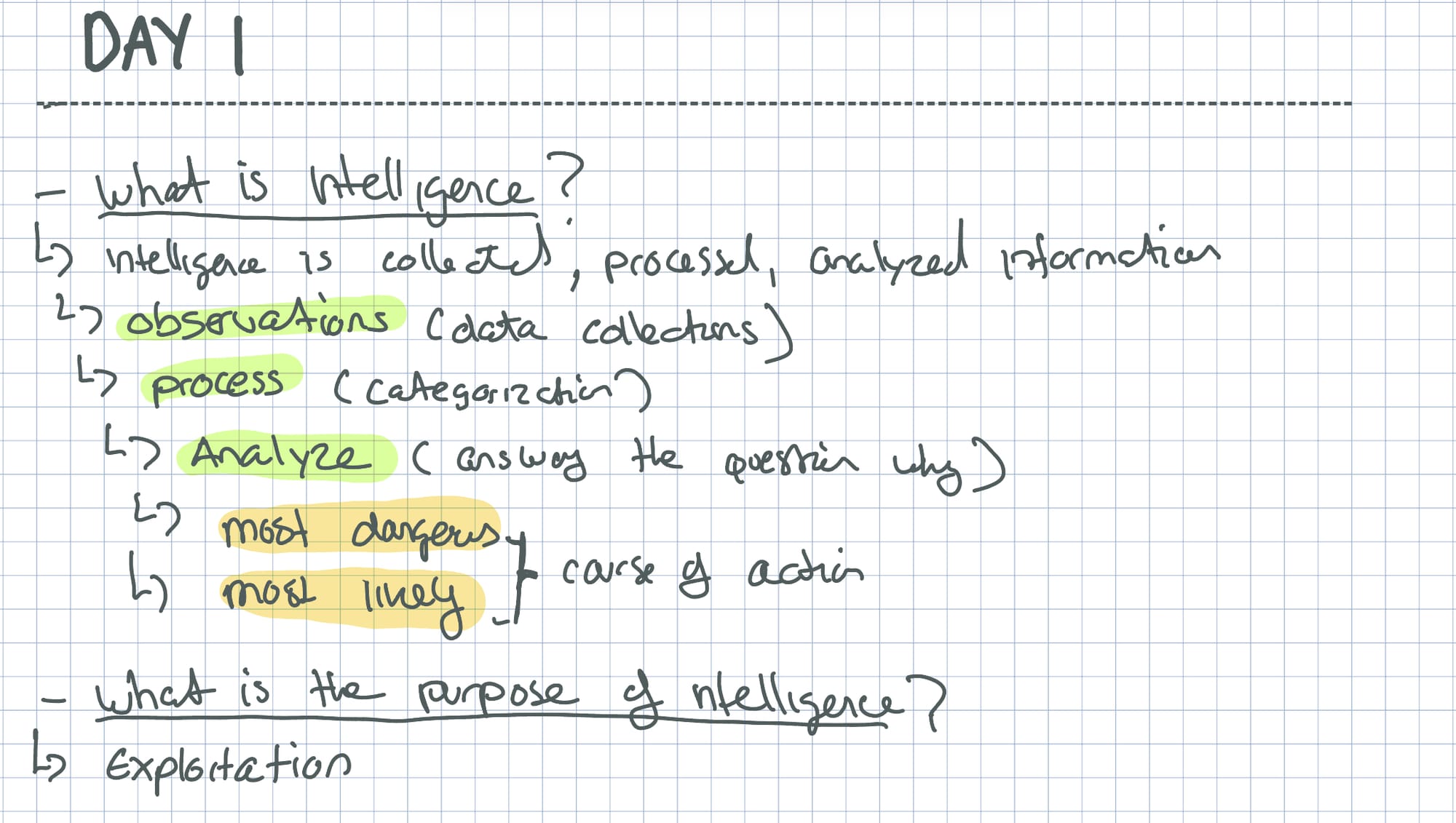
Exercise: Students Conduct a Comms Area Study to Find Signals
Students conduct area study by listening to local comms and noting which channels/frequencies are in use and who is communicating on those channels/frequencies.
Students review local data and use radioreference.com to identify licensed frequencies in the local area.

Exercise: Students are Taught to Intercept Signals
The class is split into three teams. One team is sent out into the field to generate radio traffic.
The other two teams will work together to intercept radio signals and identify them. This is our first exercise, where we learn how to grab frequencies. It's pretty wild to do this with relatively cheap equipment.
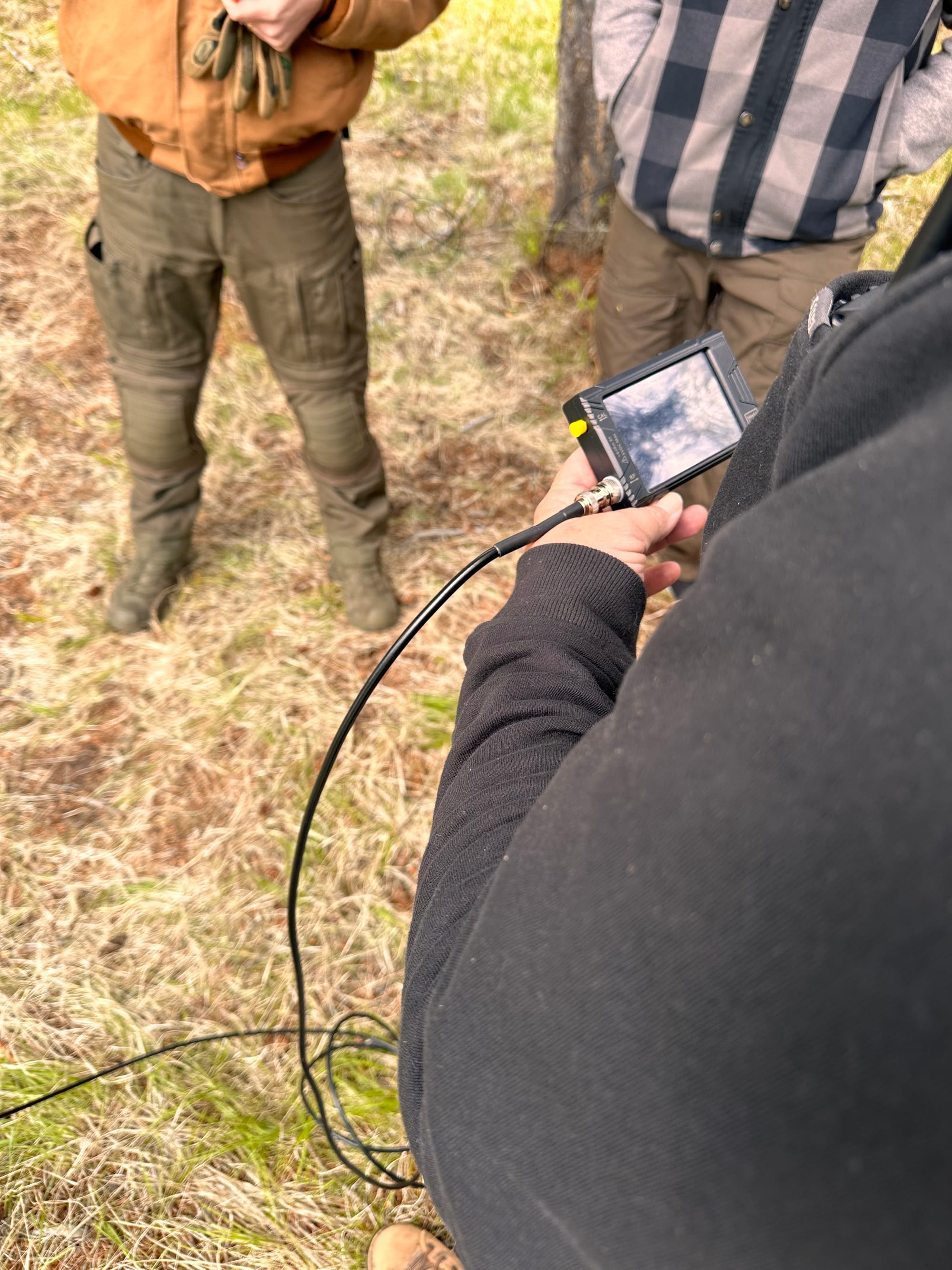
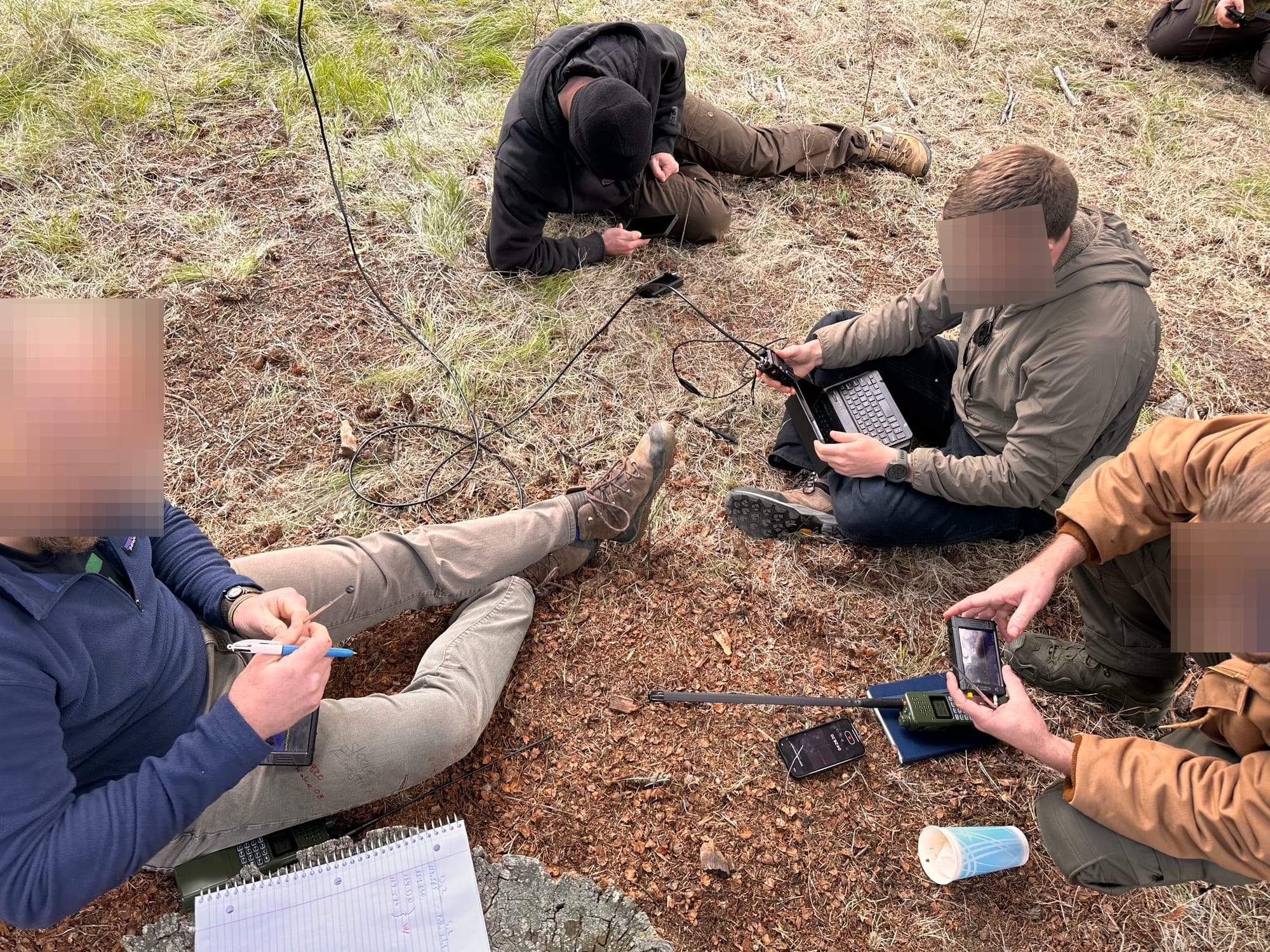
Students use the spectrum analyzer, Android tablets, a jungle antenna, and AR152 Baofengs.
DAY 2
Students Get Familiar With the tinySA Ultra Spectrum Analyzer
Students review spectrum analyzer capabilities and explore settings. This cost-effective tool can quickly identify an area's radio and digital data traffic. Almost all the students bought one of these spectrum analyzers.
What's great about this tool is that it is easy to use, even for a radio/comms newcomer like me. With very little practice, I could identify radio traffic in the area.
On the last day of the course, we experienced rain and snow. It does not like snow or rain on its screen. The TinySA Ultra advanced case (Vigilante Engineering) can be found in the Father Abraham store. The advanced case has a protective screen that covers the interface. That would be critical from my perspective if operating in a wet environment.
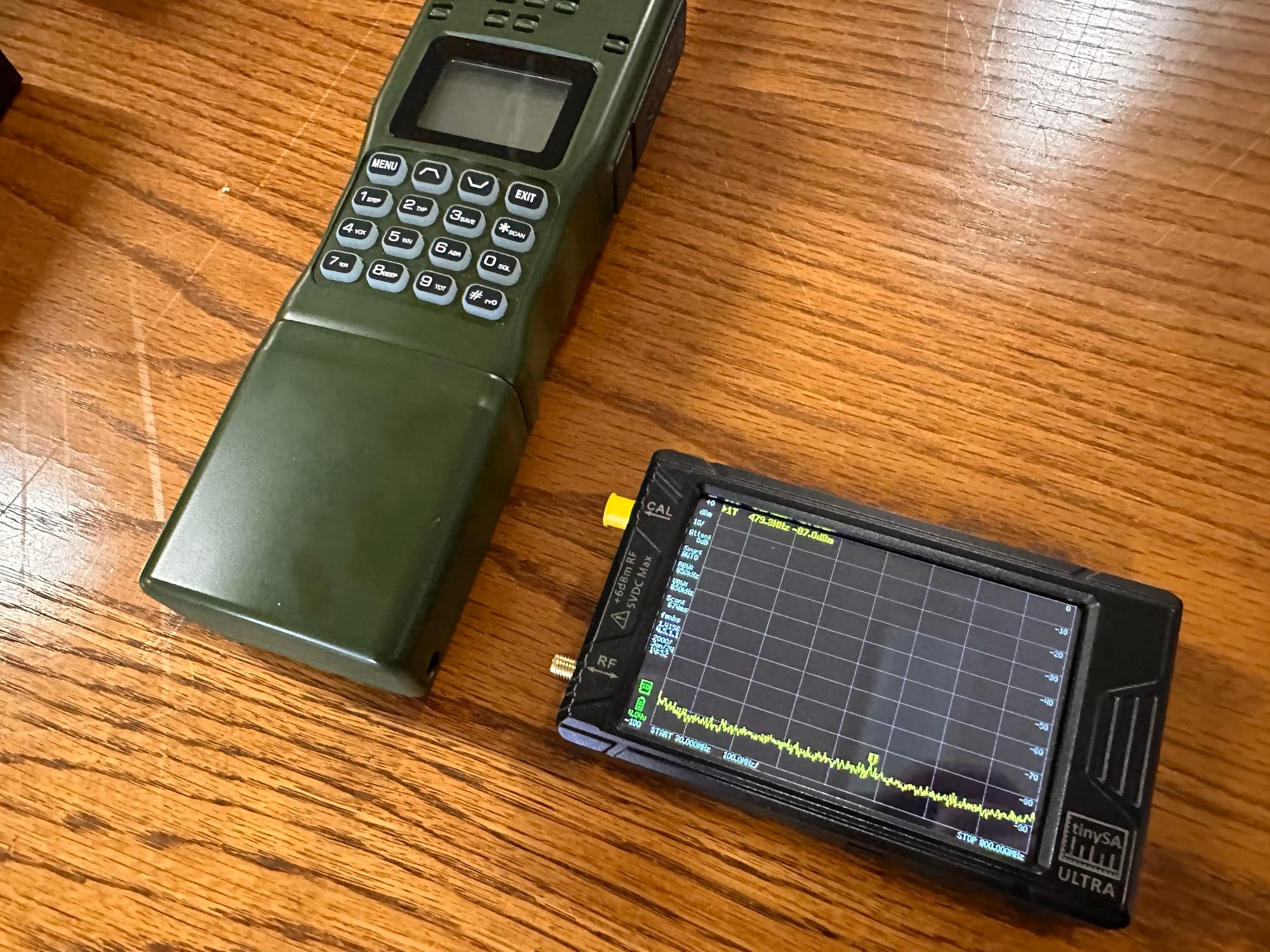
Exercise: Students Learn How to Build a Yagi Antenna
Students learned how to build 3-element and 5-element Yagi antennas with off-the-shelf products that cost almost nothing. These antennas help determine the direction of radio transmissions.
Again, it's a surprise that we were able to build these direction-finding antennas with such cheap material that you can find at any hardware store. Guess what? They worked, and we found the direction of teams transmitting signals during later exercises.
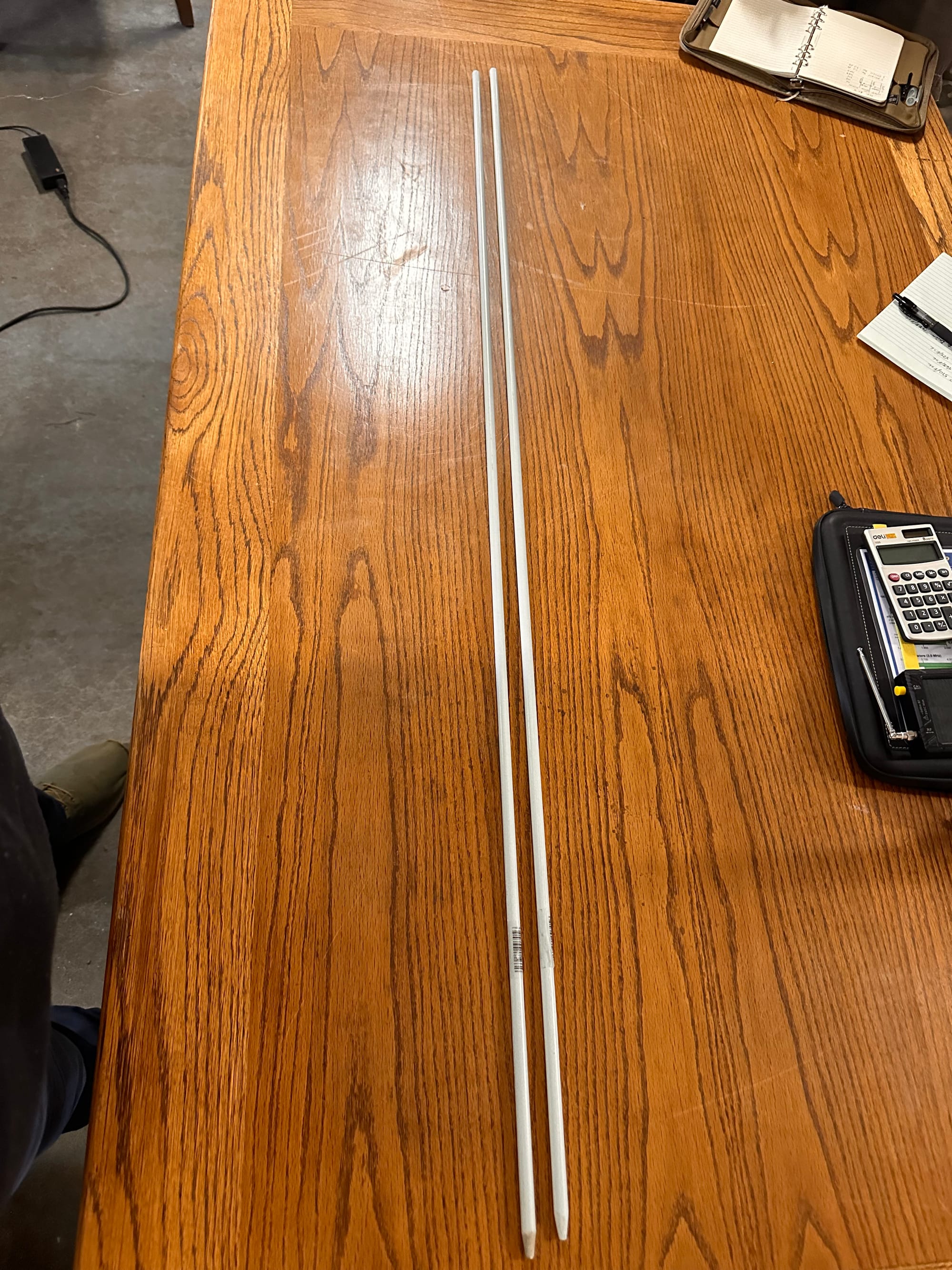
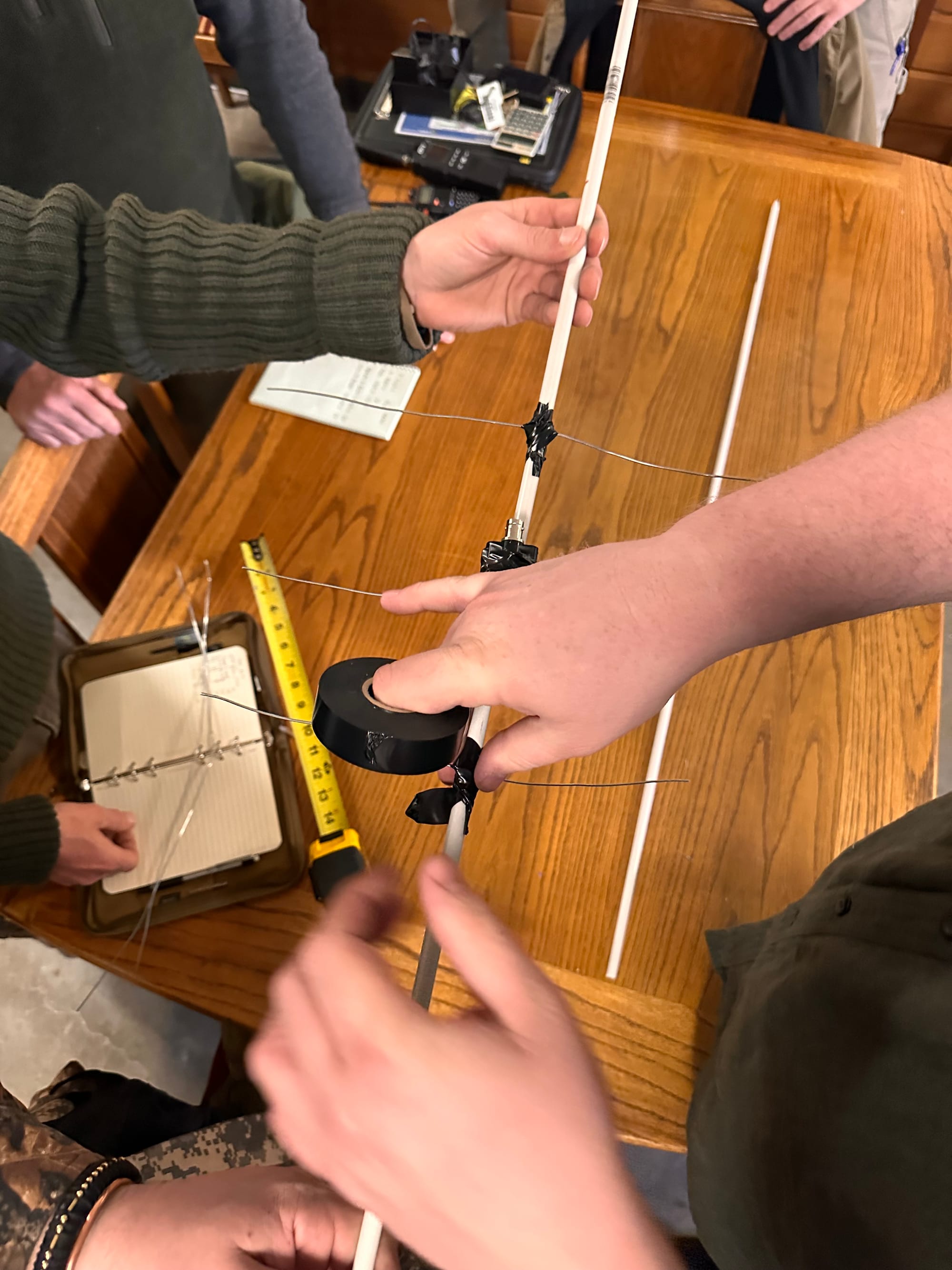
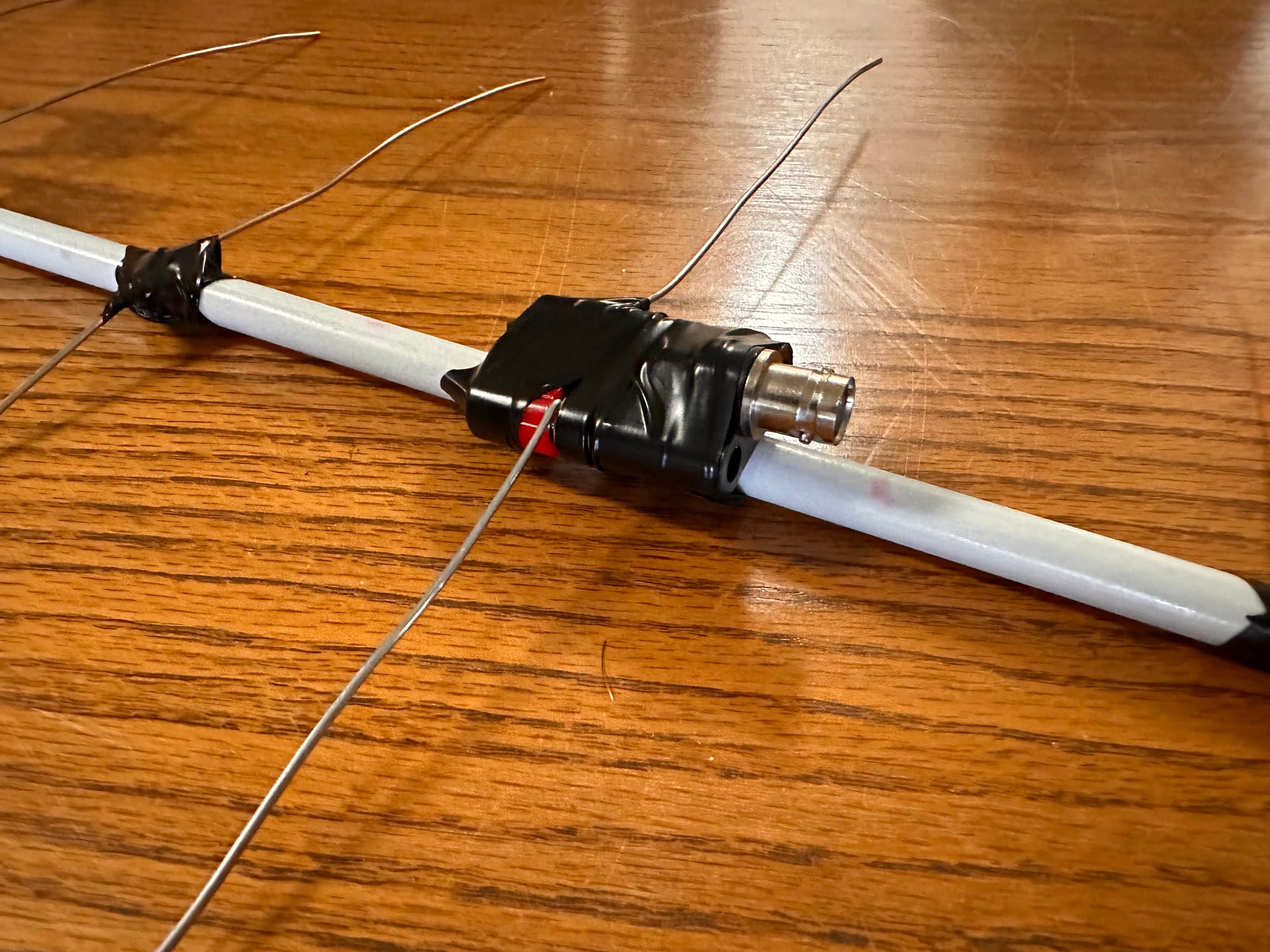
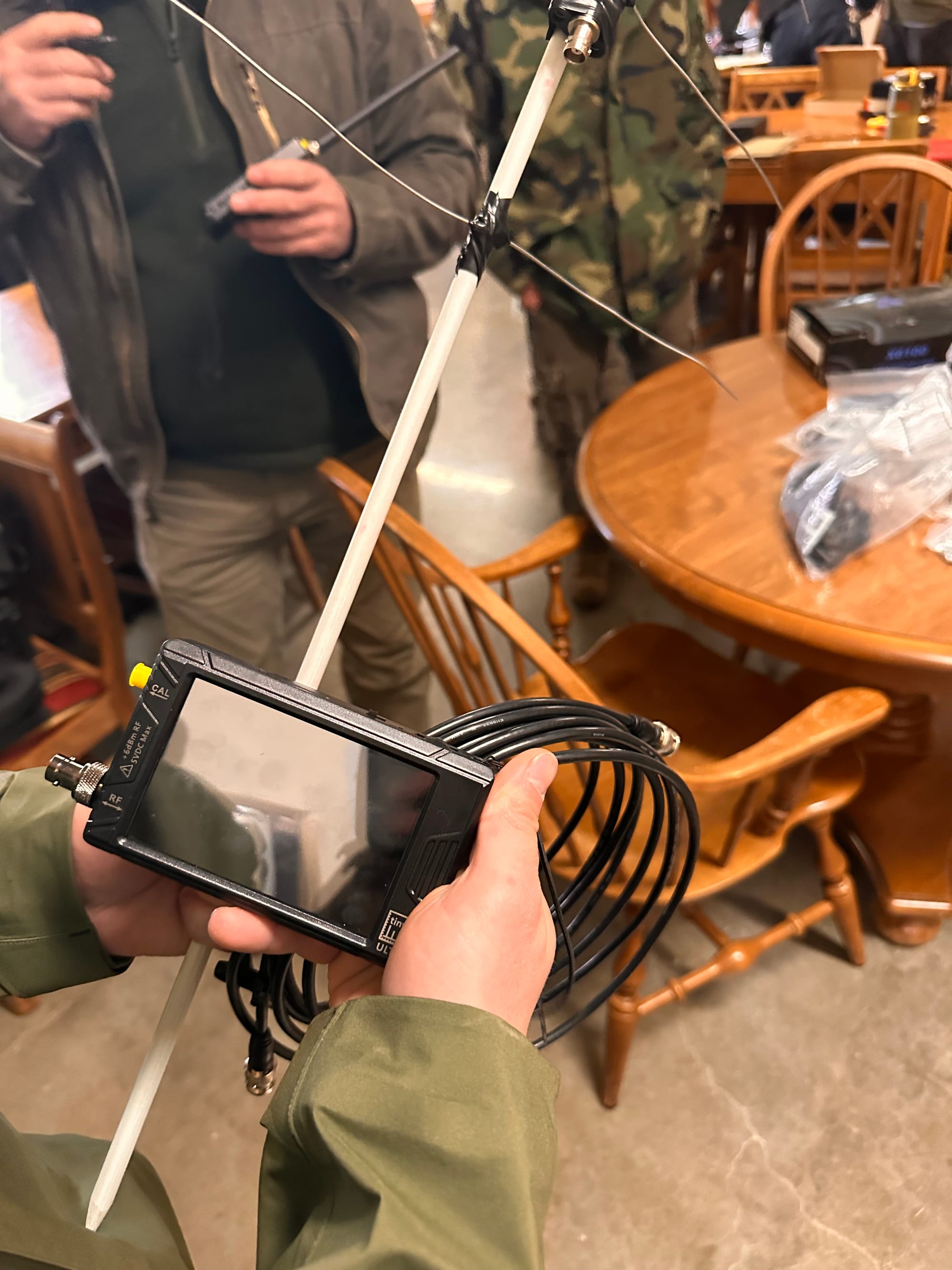
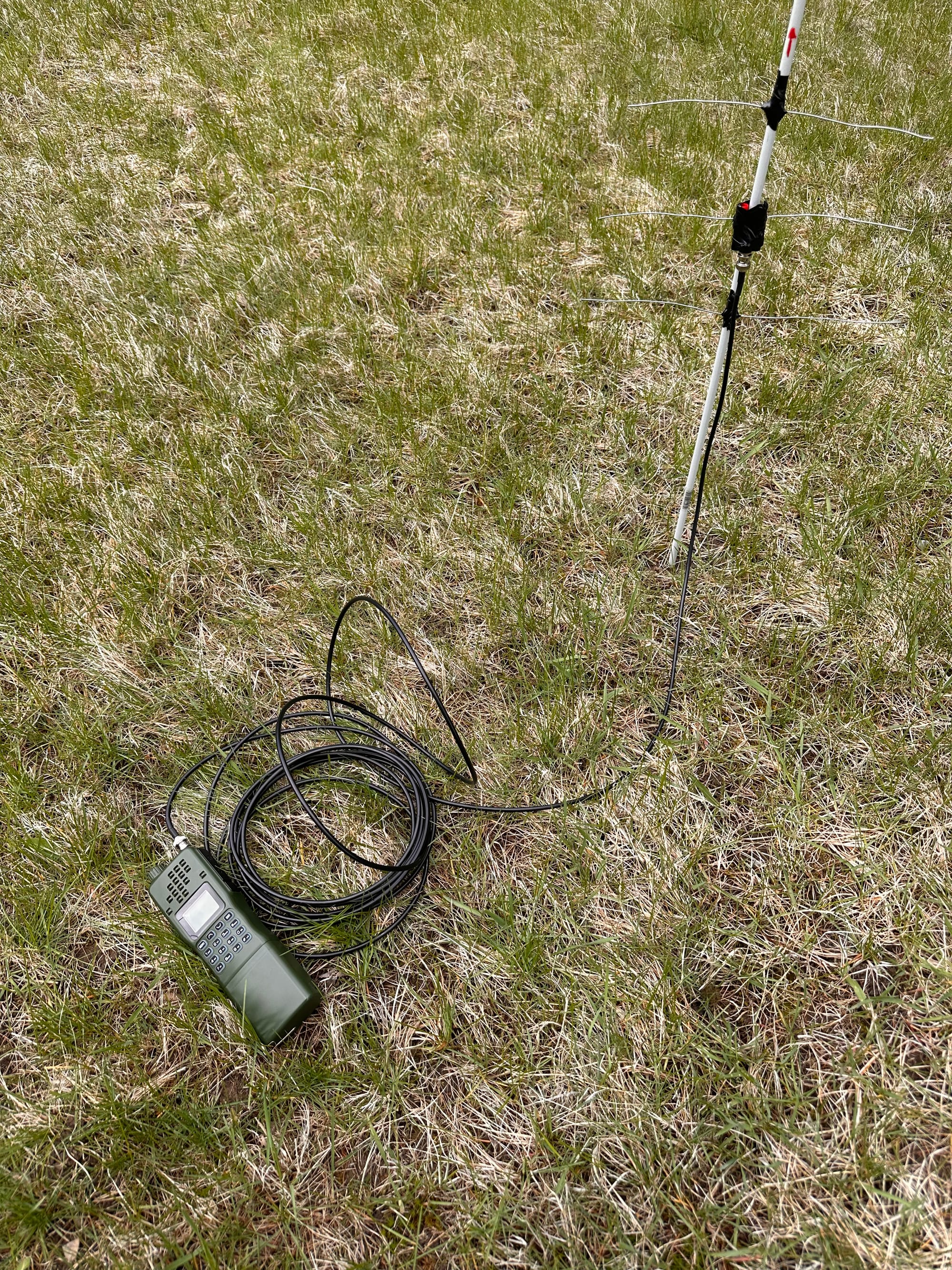
The hands-on, practical approach makes these courses very valuable to someone looking for interactive radio/comms courses.
Exercise: Students Learn How to Exploit Signals
For this exercise, the class is split into three teams. One team of students acts as a patrol, generating signals in the field.
The other two teams are the signal collections team, which attempts to identify the correct frequencies. Once identified, the signal collections teams try to passively and actively jam the patrol's frequencies.
I shared some additional images because it's day 2, and we are starting to hit our stride, working as a team and trying to nail down the frequencies the patrol team is generating.
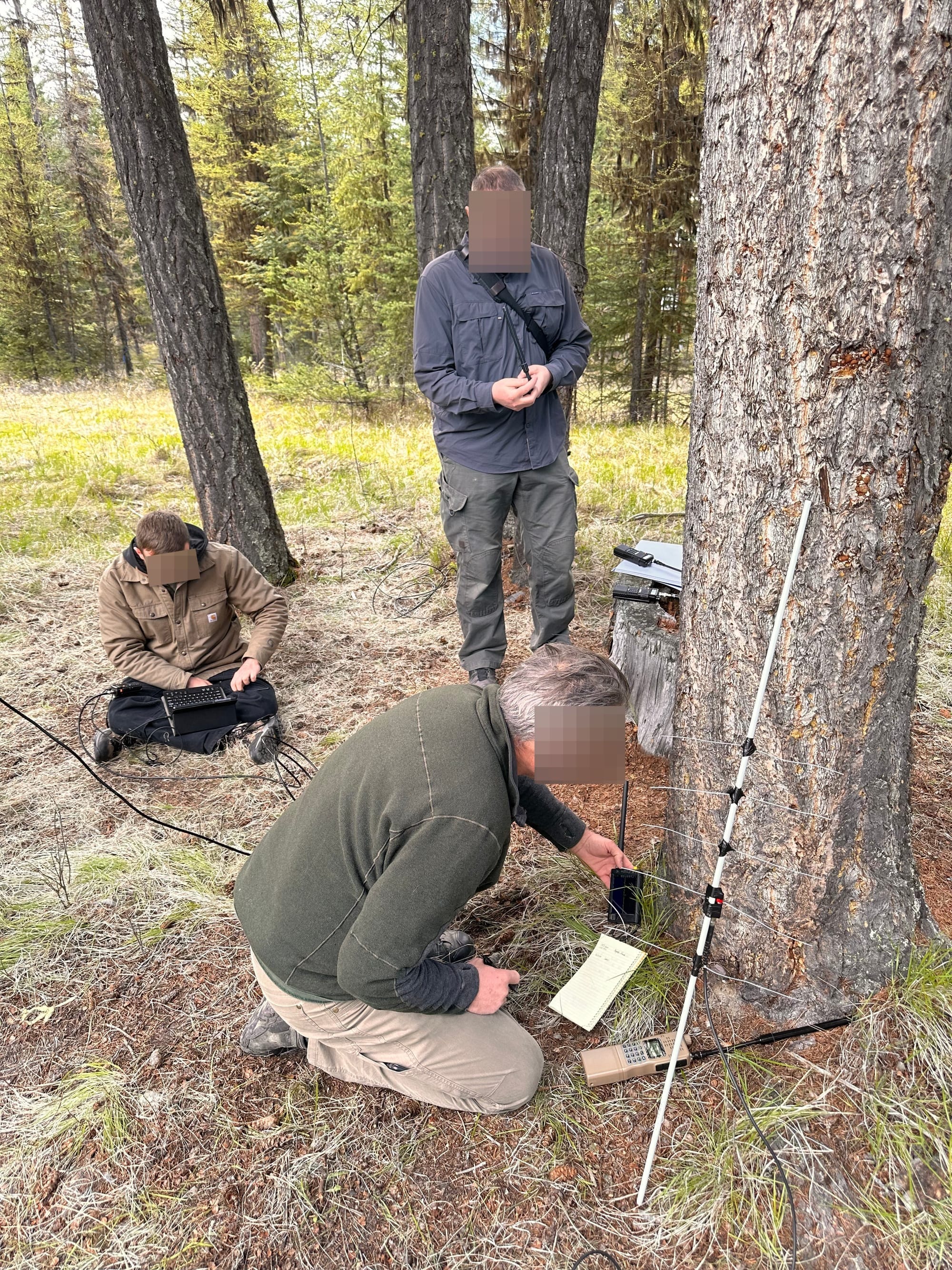
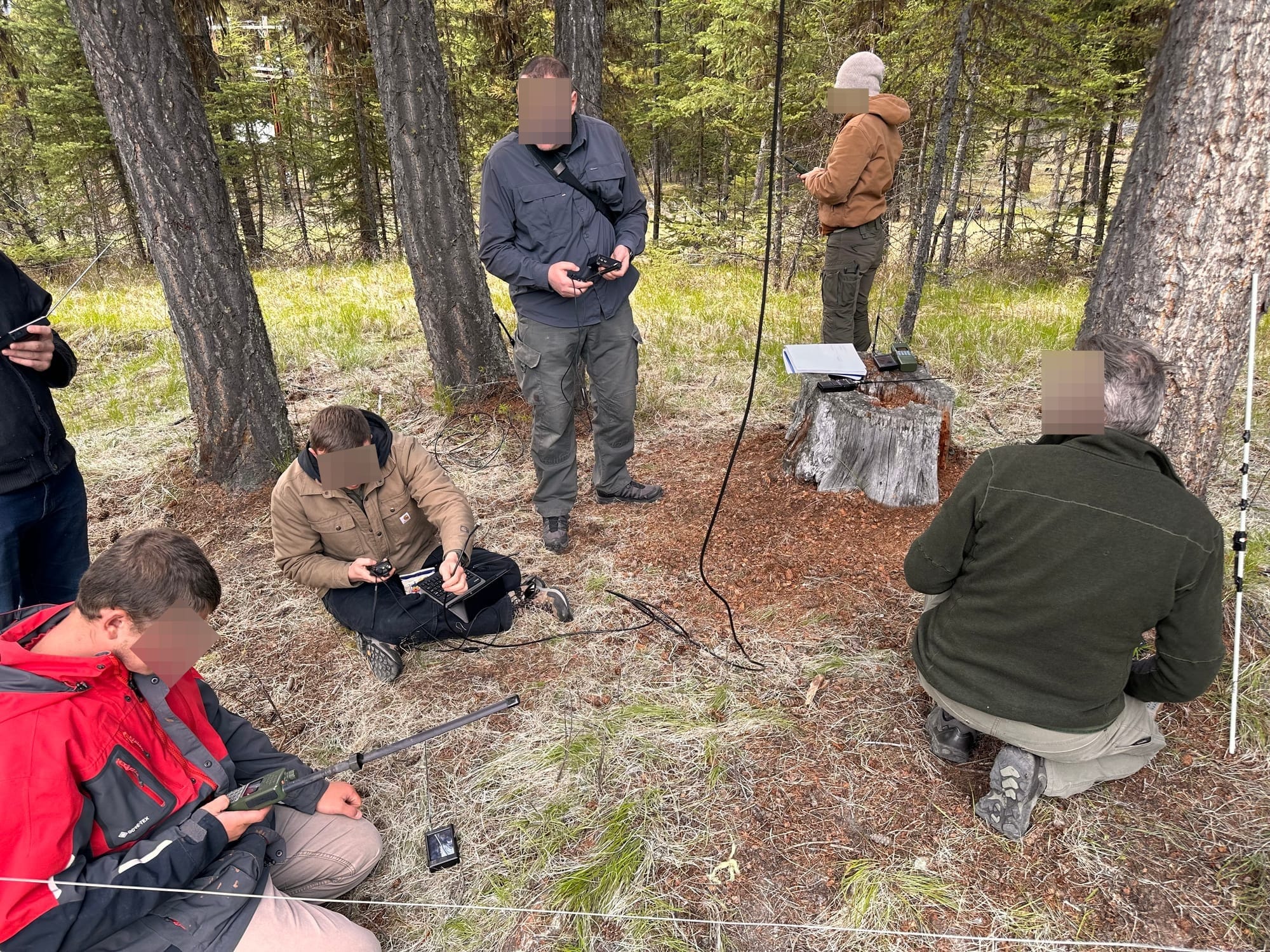
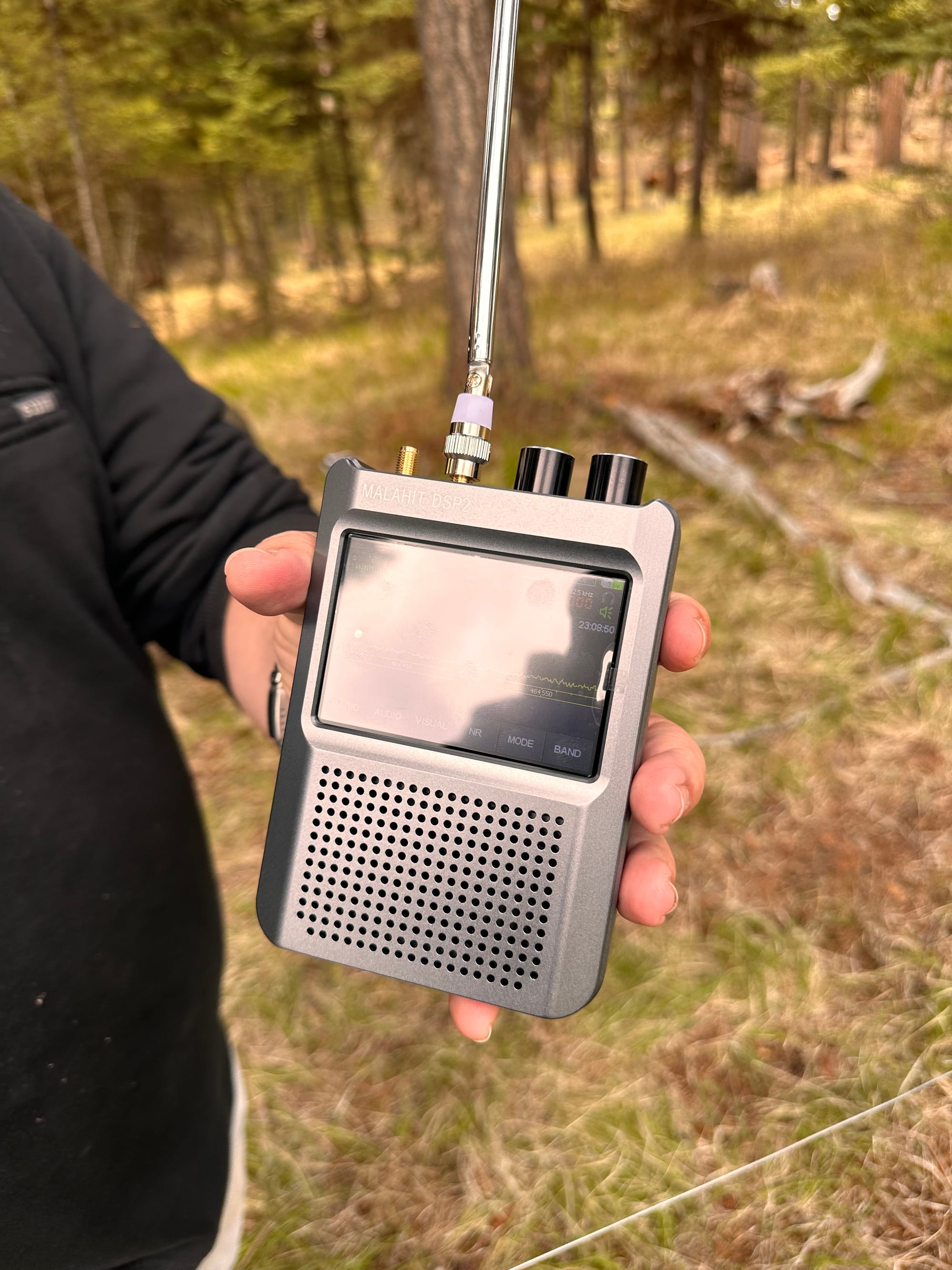
Day 3
Students Learn Other Common Digital Modes and Cellphone Exploitation
We spent several hours in the morning reviewing and learning about different digital modes worldwide. We briefly touched on the topic of cellphone exploitation.
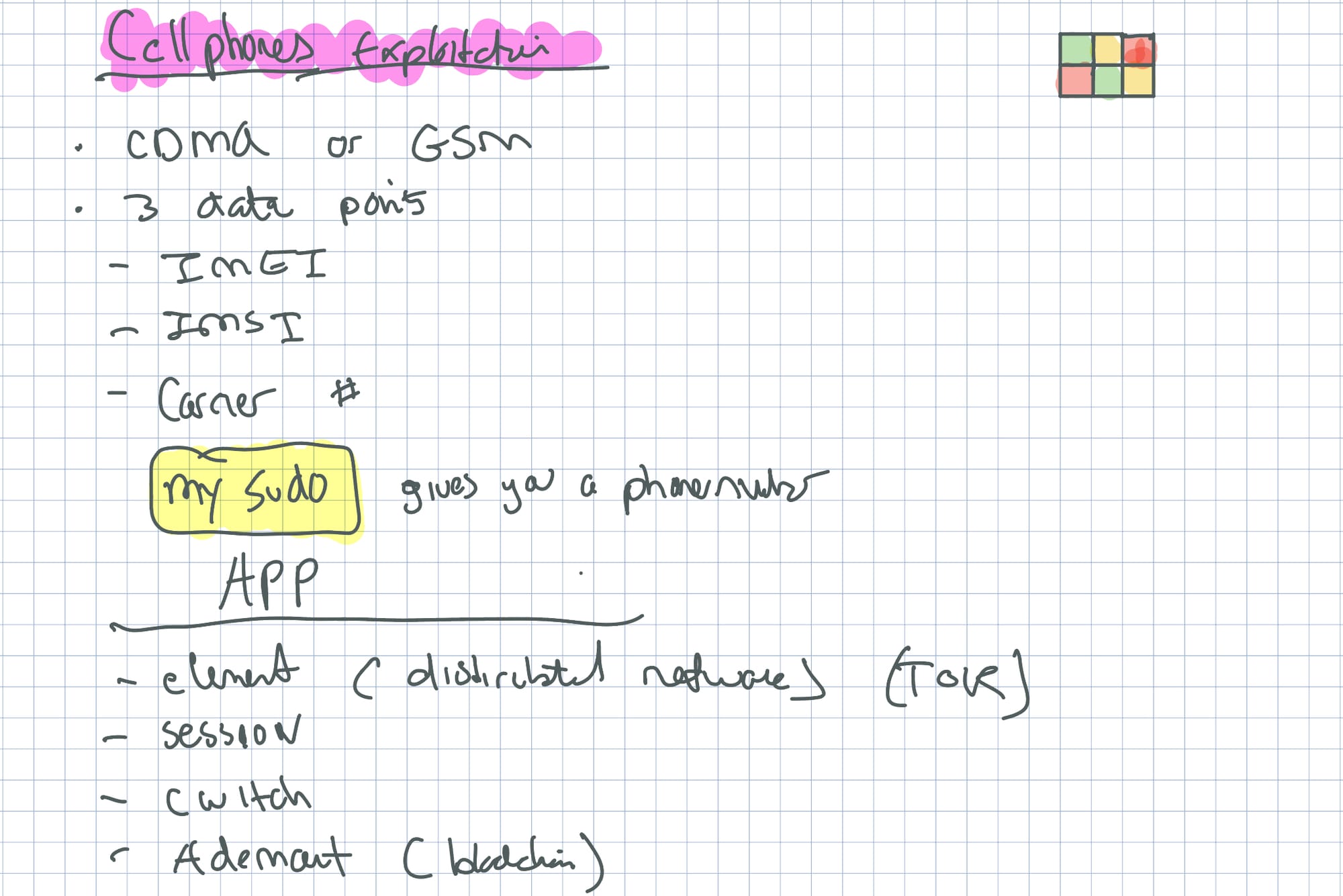
Students Complete the Last Exercise of the Course
The class was divided into three separate teams. Each team rotates through a station.
- Signals intelligence (SIGINT) team
- Tactical Operation Center (TOC) team
- Patrol team
This exercise culminated everything we had learned in the SIGINT course.
Signal Intelligence (SIGINT) Team
The students in this team were tasked with the following:
- Grab monitoring/exploitation tools.
- Head out into the field and create a listening post.
- Execute the F3EAD method.
- Intercept and exploit communications between the TOC and patrol team.
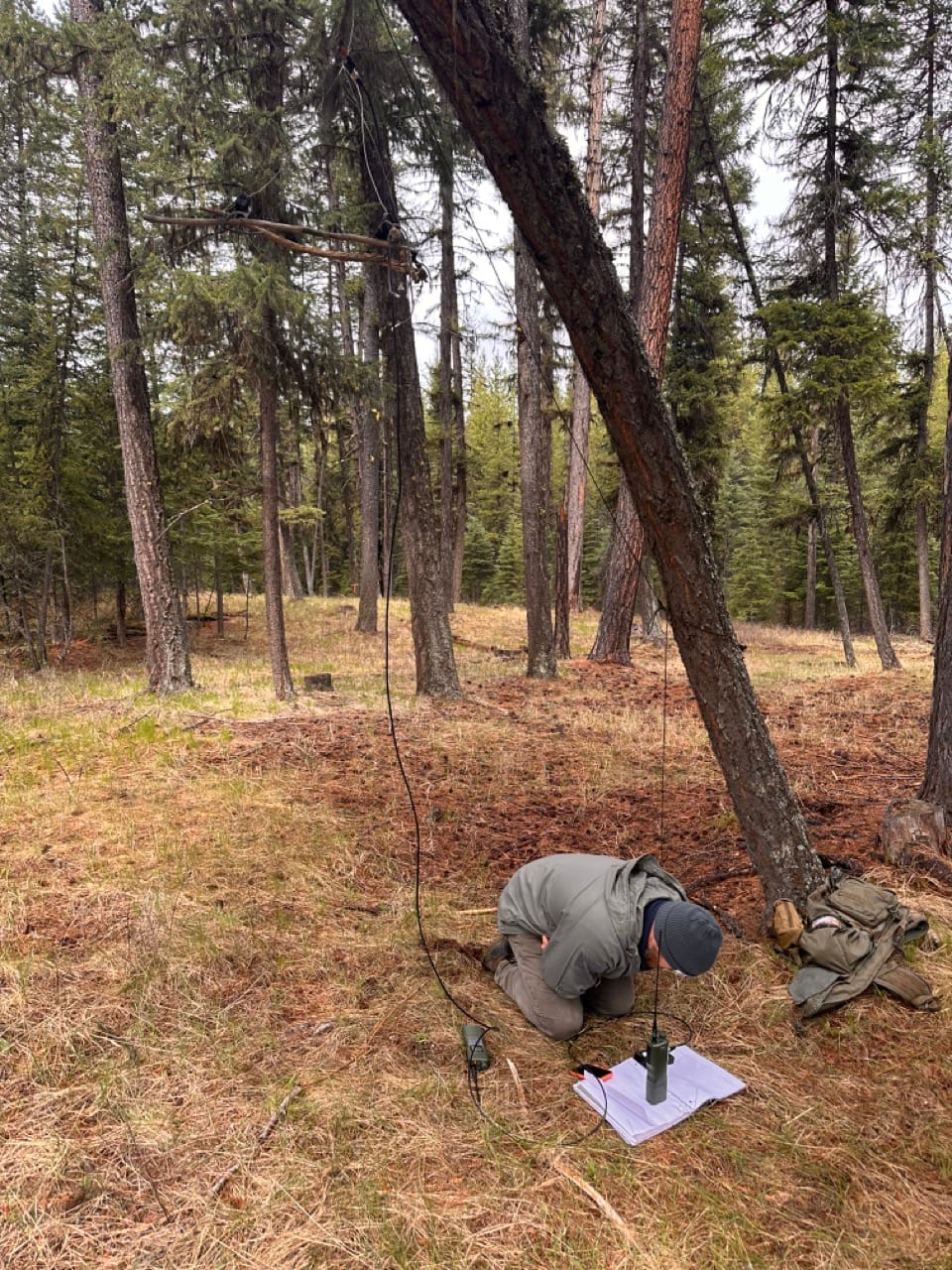
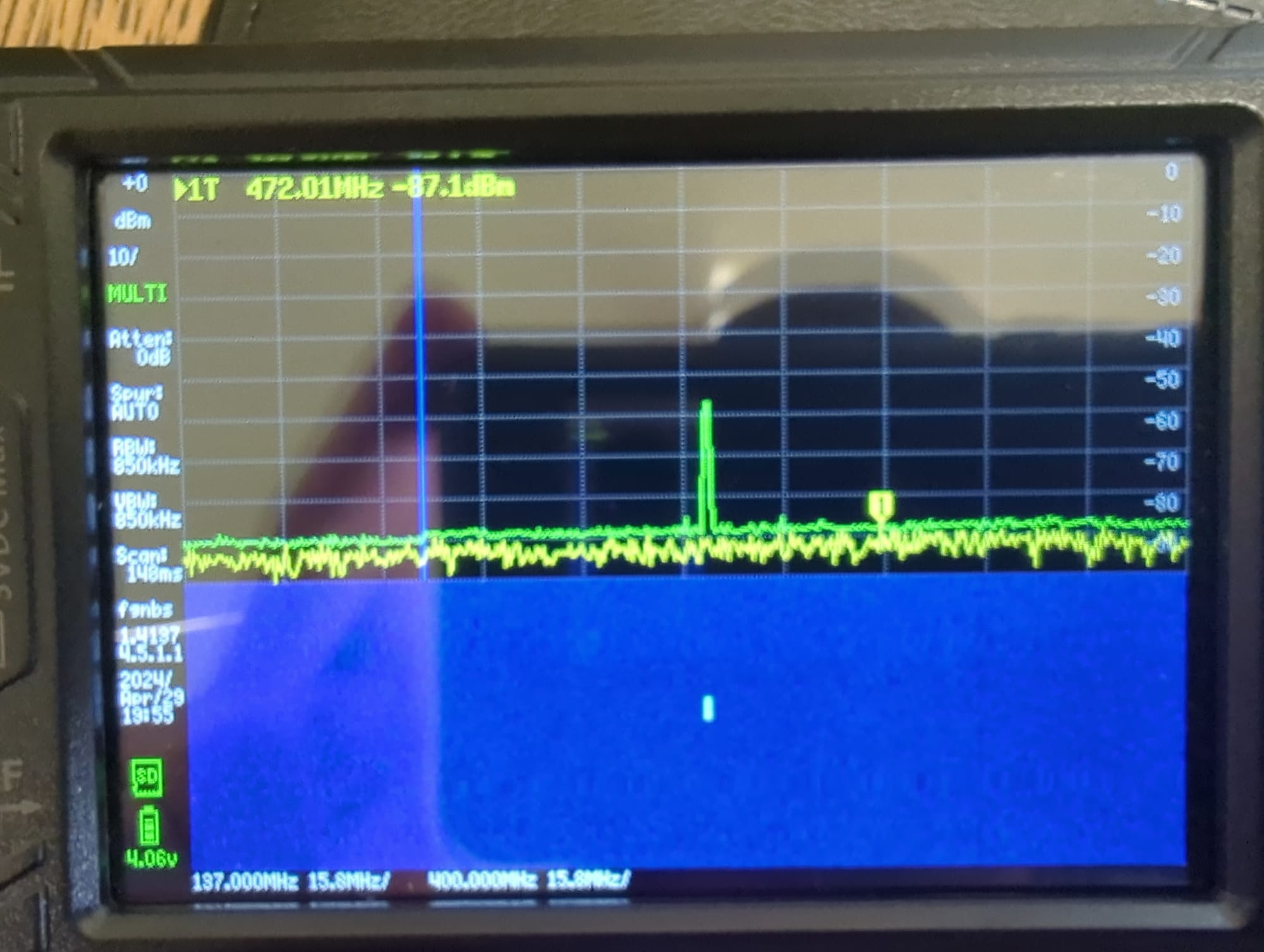
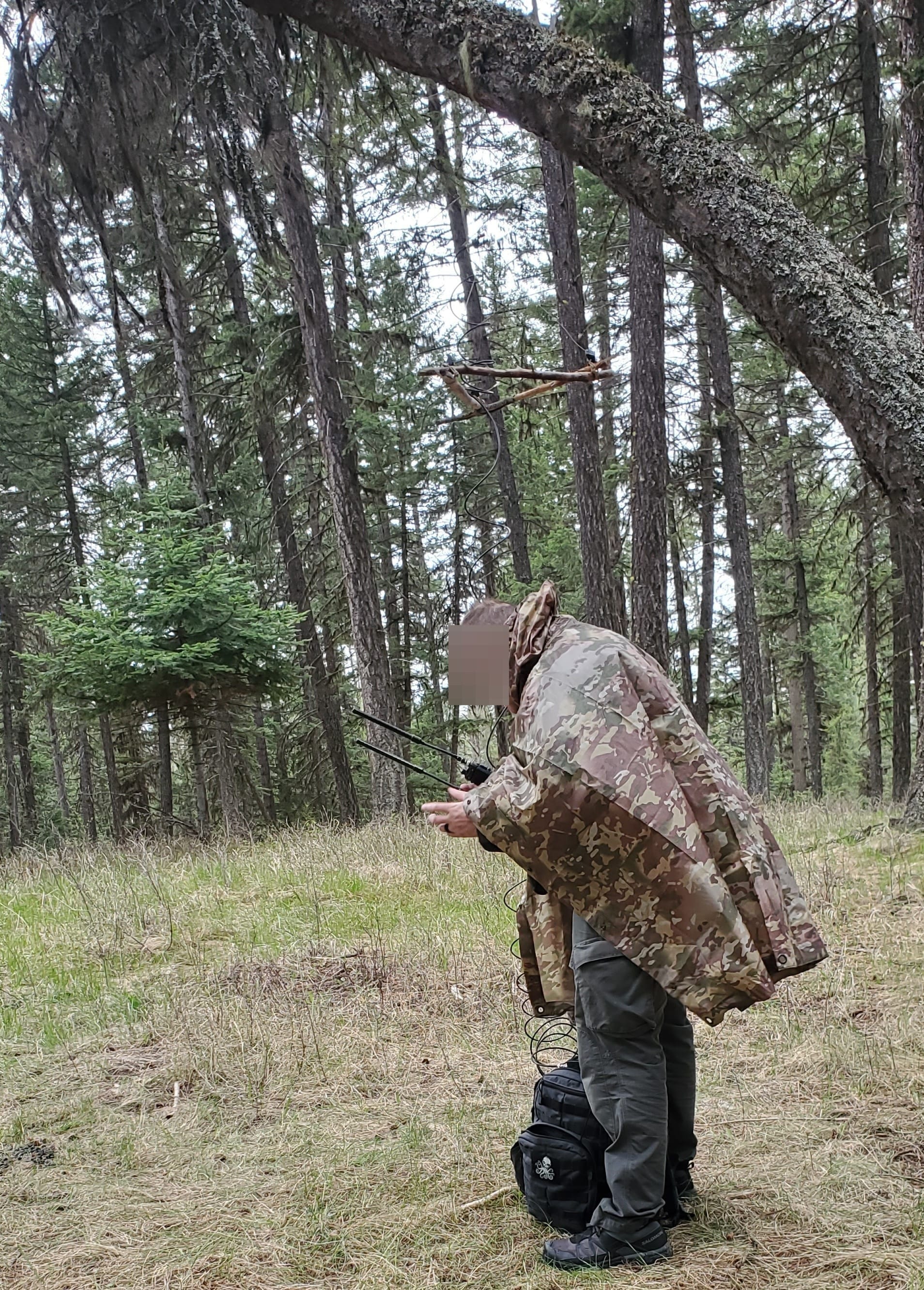
Students set up a listening post to gather signals intelligence from the roving patrol team.
Tactical Operation Center (TOC)
Students manned the TOC and stayed back in the classroom. They set up an SOI with the patrol team and waited to receive regular updates.
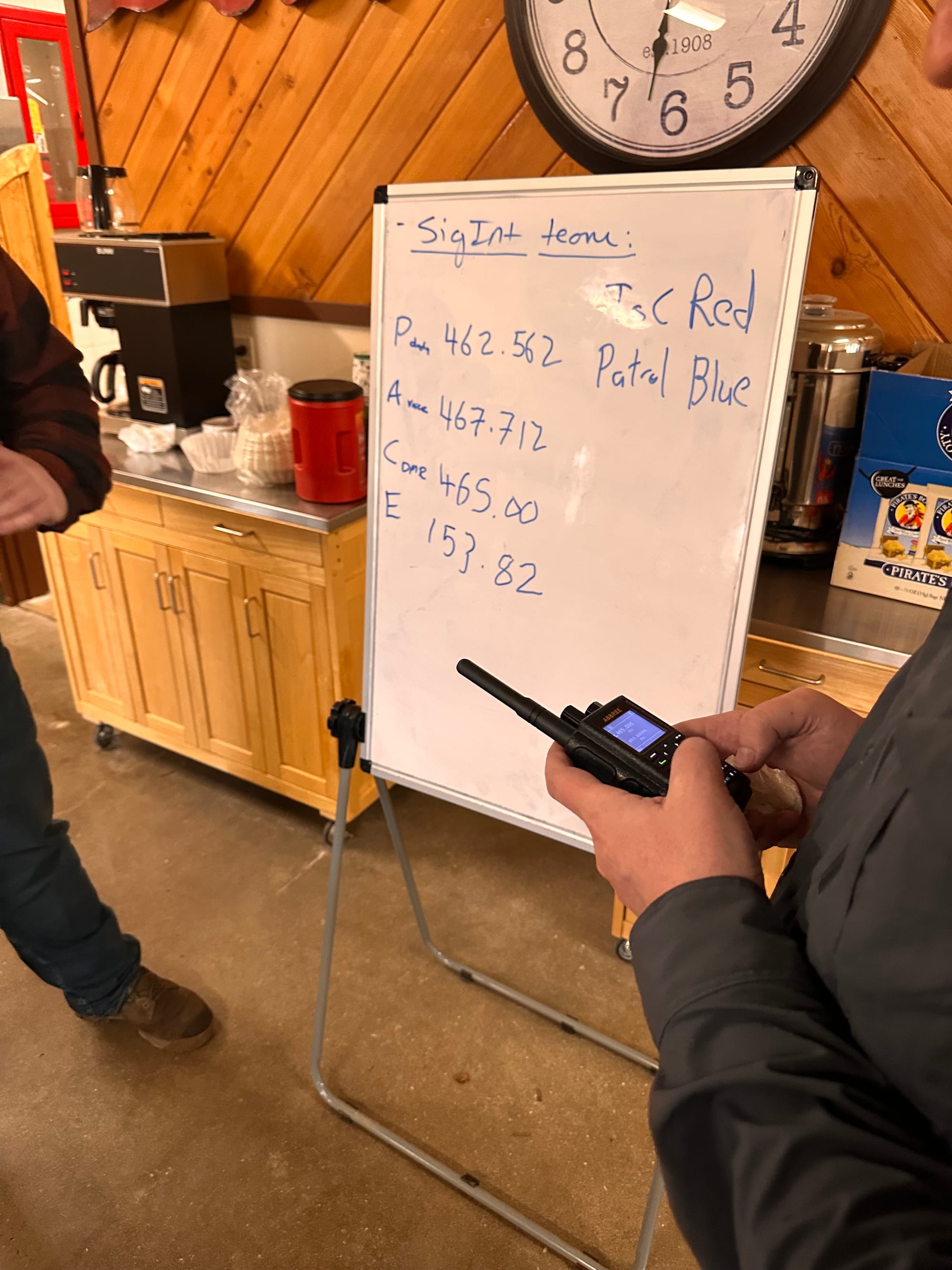
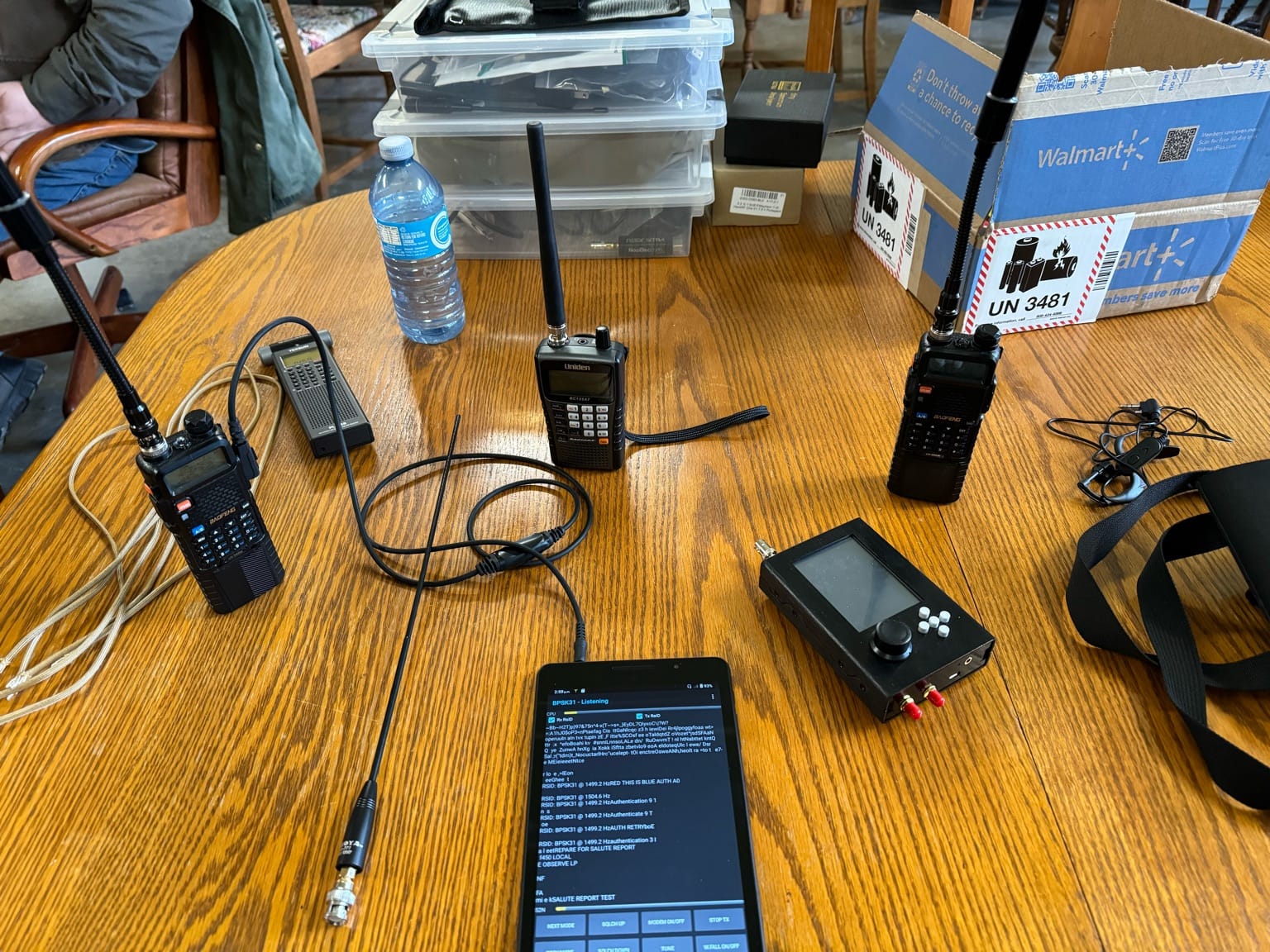
Students create an SOI. Then, different frequencies in the TOC will be monitored.
Patrol Team
The students on the patrol team were tasked with the following:
- Set up SOI with the TOC team.
- Head out into the field.
- Select a communication site.
- Authenticate with the TOC.
- Send data and voice SALUTE reports.
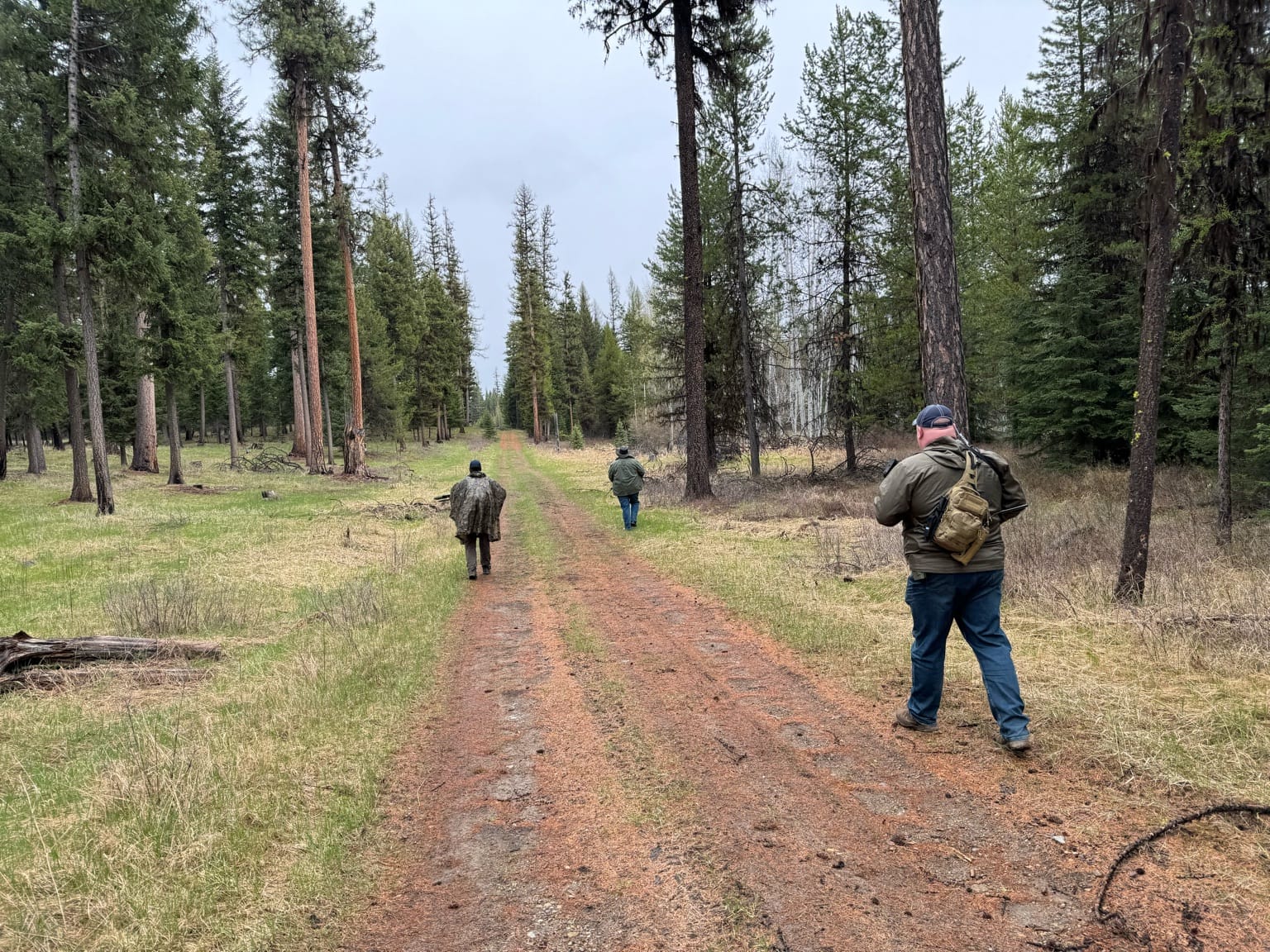
Wrapping Up the Course
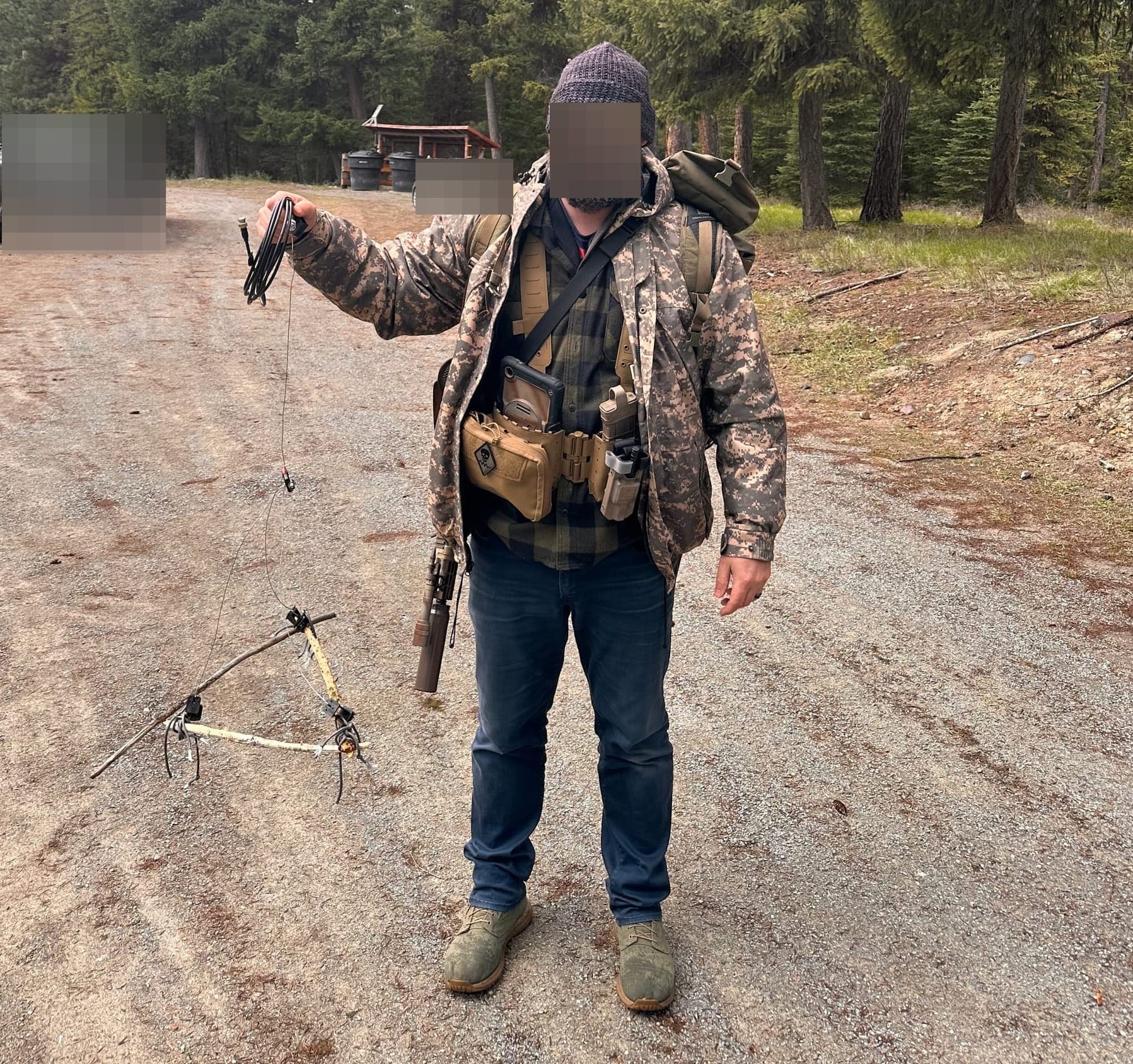
I've often used the phrase "eye-opener" during the Radio Telephone Operator (RTO) and Signals Intelligence SIGINT course. But that's what these courses did for me. It opened my eyes to how critical communications are and what I need to do to be prepared.
Without communication, you can't do the following:
- You have no idea who is communicating in your area.
- You are unable to check in with other people.
- You are unable to organize anything of scale.
- You can't make any plans.
With basic communication skills, you can:
- Assess the people/groups in your area that are communicating. Who are they? What are they talking about? Are they friends or foes?
- Listen to essential news broadcasts that may affect your area/community.
- Organize people and groups in case someone needs help or assistance.
- Stay in touch with others during an emergency.
- Make basic plans on how to evacuate an area.
Become dangerous, get training.
Signals Intelligence Course (3 Day Course) Overview
A three-day SIGINT Course. Students explore using common/off-the-shelf (COTS) Signals Intelligence Equipment to identify and exploit threats in a working environment.
Day 1:
- Students Learn Basic Intelligence Concepts and are Taught the Acronym F3EAD
- Exercise: Students Conduct a Comms Area Study to Find Signals
- Exercise: Students are Taught to Intercept Signals
Day 2:
- Students Get Familiar With the TinySA Ultra Spectrum Analyzer
- Exercise: Students Learn How to Build a Yagi Antenna
- Exercise: Students Learn How to Exploit Signals
Day 3:
- Students Learn Other Common Digital Modes and Cellphone Exploitation
- Students Complete the Last Exercise of the Course
Join my Patreon even if my voice sounds like an NPR host.
Stay Connected
- I talk about Preparedness, Christian Living, and Encouragement.
- You can find me on X and Instagram.
- Podcast: https://fatherabraham.podbean.com/.
- Blog: www.fatherabraham.co.
- Online store: https://shop.fatherabraham.co/
I Encourage You to Live Life With






